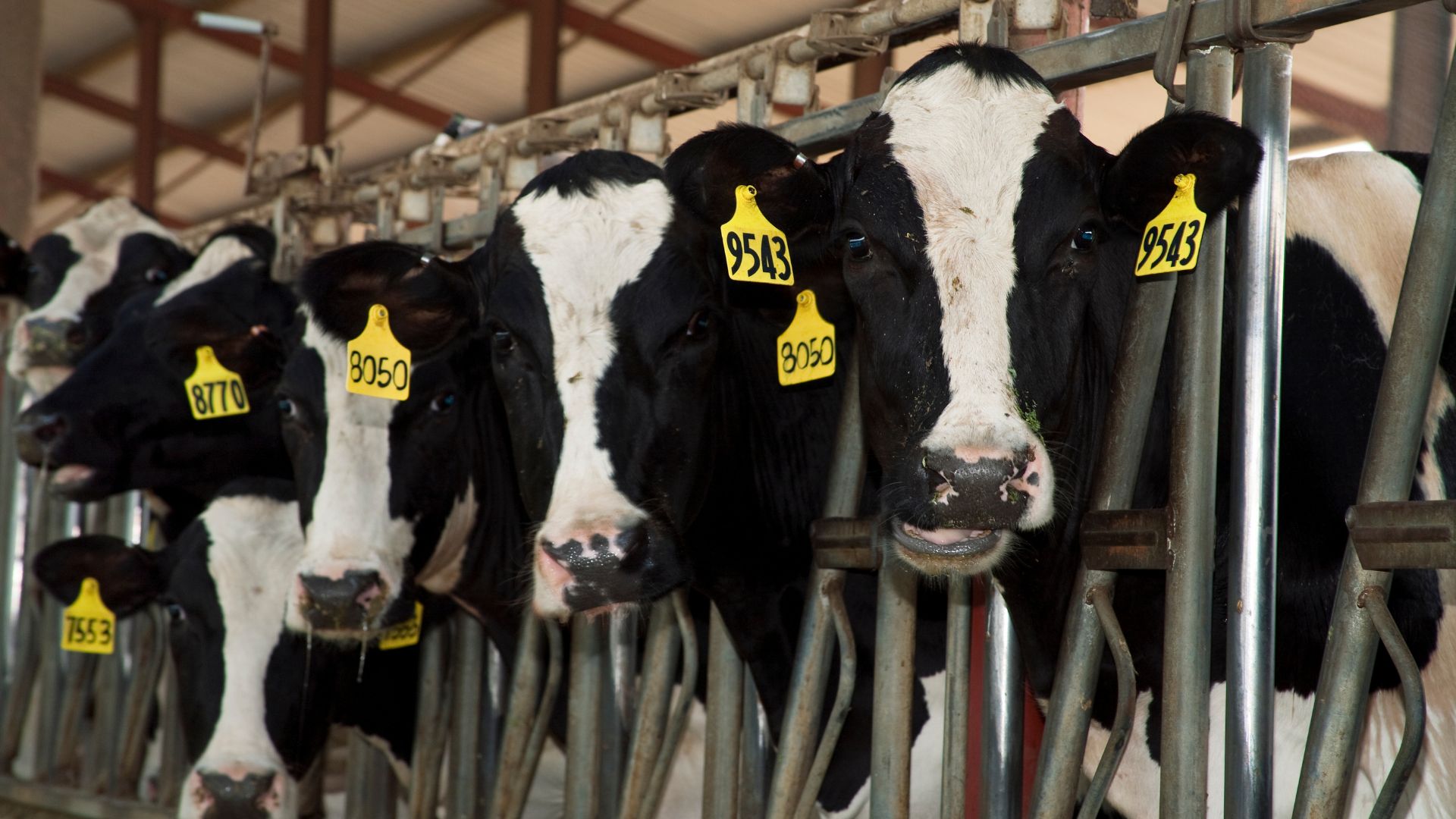Latest human H5N1 bird flu case in US is 1st to cause respiratory symptoms
This infection, tied to an ongoing outbreak in cows, is the first in the U.S. to cause respiratory symptoms, but not the first H5N1 case in the world to do so.

A third human case of bird flu has been linked to the ongoing outbreak in cows on U.S. dairy farms — and this one came with respiratory symptoms, such as cough, the Centers for Disease Control and Prevention (CDC) reported May 30.
Officials first became aware of bird flu spreading among U.S. dairy cows in March, and since then, the viral disease has been detected among cattle on farms in nine states. The type of bird flu spreading is known as H5N1, which has sporadically infected individual humans in the past but has never spread widely from person to person. However, these rare human infections can sometimes be fatal, and there's concern about the virus picking up the necessary mutations to spread easily through the populace.
Prior to the outbreak in cows, only one person in the U.S. had ever been infected with H5N1, as far as we know. Now, since the outbreak began, three people have likely been infected via exposure to sick cows. The first person infected by a cow was in Texas, and the second was in Michigan; both are dairy-farm workers and developed only eye infections from the virus before recovering.
The third, newly reported case linked to cow exposure was also in Michigan but on a different farm. The person was given treatment and is now isolating at home as their symptoms resolve. This infection is notable because it is the first human H5N1 case in the U.S. associated with respiratory symptoms.
Related: H5N1: What to know about the bird flu cases in cows, goats and people
"This is the first human case of H5 in the United States to report more typical symptoms of acute respiratory illness associated with influenza virus infection, including A(H5N1) viruses," the CDC reported. "The patient reported upper respiratory tract symptoms, including cough without fever, and eye discomfort with watery discharge."
In humans, bird flu viruses, including H5N1, can cause both mild symptoms — including pink eye, cough, sore throat, runny nose and body aches — as well as severe ones, such as pneumonia, difficulty breathing and seizures. If severe, the infections can be fatal, but antiviral drugs available for seasonal flu can help treat the disease.
Sign up for the Live Science daily newsletter now
Get the world’s most fascinating discoveries delivered straight to your inbox.
Finding another case of human H5N1 infection is "not surprising," given the extent of the spread of this virus in dairy cows, the CDC says. H5N1 was also already known to cause respiratory symptoms — however, seeing this is still concerning because, generally, symptoms like coughing and sneezing can make it easier for a virus to spread between people, The New York Times reported.
Each time the virus jumps to people, it gains an opportunity to pick up mutations that make it capable of spreading sustainably between humans — a chain of events that, in the worst scenario, could precipitate a pandemic.
With that possibility in mind, the CDC continues to closely monitor for unusual flu activity across the country. So far, "there has been no sign of unusual influenza activity in people, including no increase in emergency room visits for influenza and no increase in laboratory detection of human influenza cases," the agency reported.
Scientists are also looking to see if the virus has picked up any mutations that would raise the risk of spread, although thus far, there's no evidence of person-to-person transmission.
Based on the available information, the risk of spread to the general public remains low, the CDC noted. As always, health authorities still recommend against drinking raw milk. Dairy-farm workers currently face the highest risk of exposure, the agency emphasized.
Some experts have argued that federal officials should be screening many more workers for H5N1 and offering optional experimental bird flu vaccines, The New York Times reported. At this point, only about 40 farm workers have consented to being tested for H5N1, while a few hundred are being monitored for possible symptoms, according to news reports.
This article is for informational purposes only and is not meant to offer medical advice.
Ever wonder why some people build muscle more easily than others or why freckles come out in the sun? Send us your questions about how the human body works to community@livescience.com with the subject line "Health Desk Q," and you may see your question answered on the website!

Nicoletta Lanese is the health channel editor at Live Science and was previously a news editor and staff writer at the site. She holds a graduate certificate in science communication from UC Santa Cruz and degrees in neuroscience and dance from the University of Florida. Her work has appeared in The Scientist, Science News, the Mercury News, Mongabay and Stanford Medicine Magazine, among other outlets. Based in NYC, she also remains heavily involved in dance and performs in local choreographers' work.










